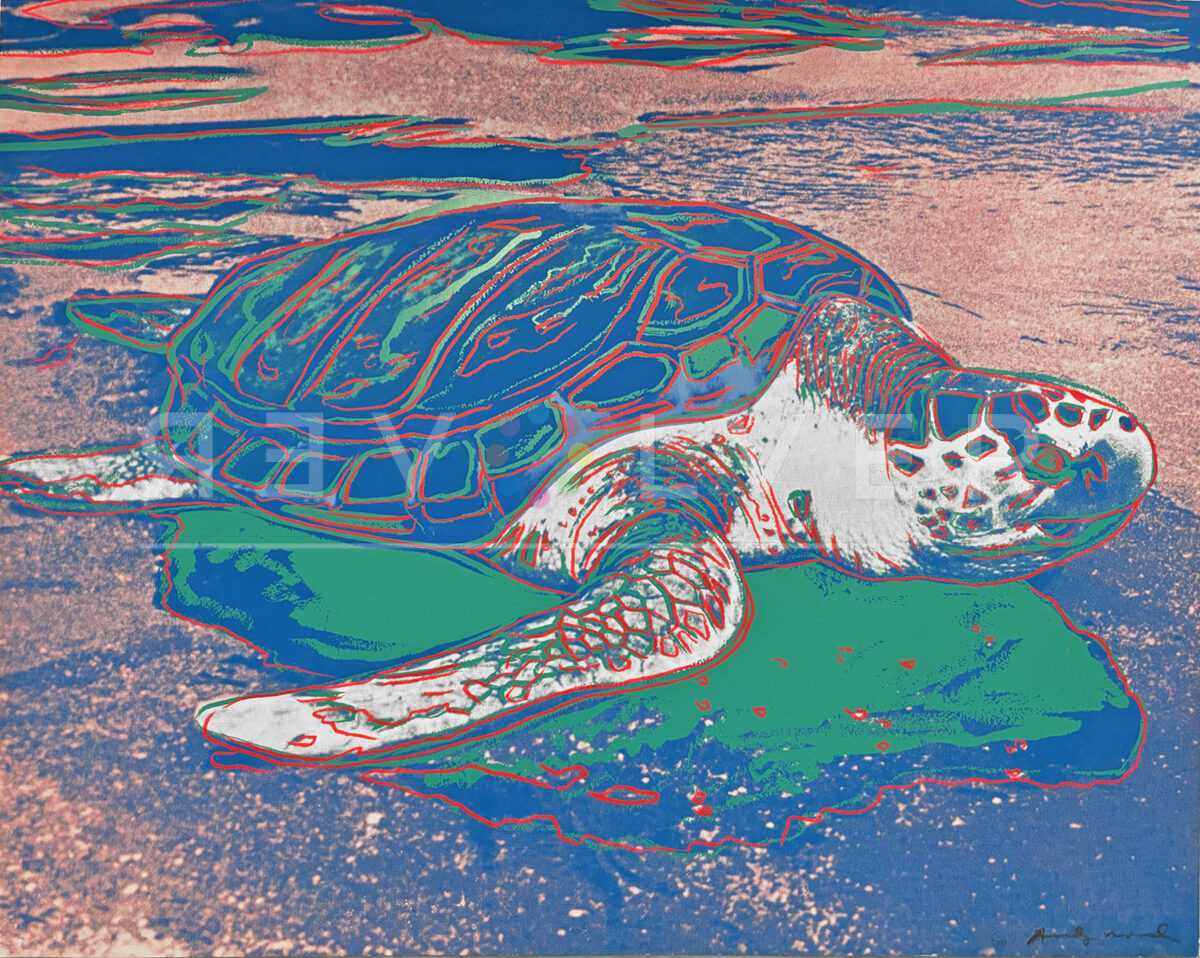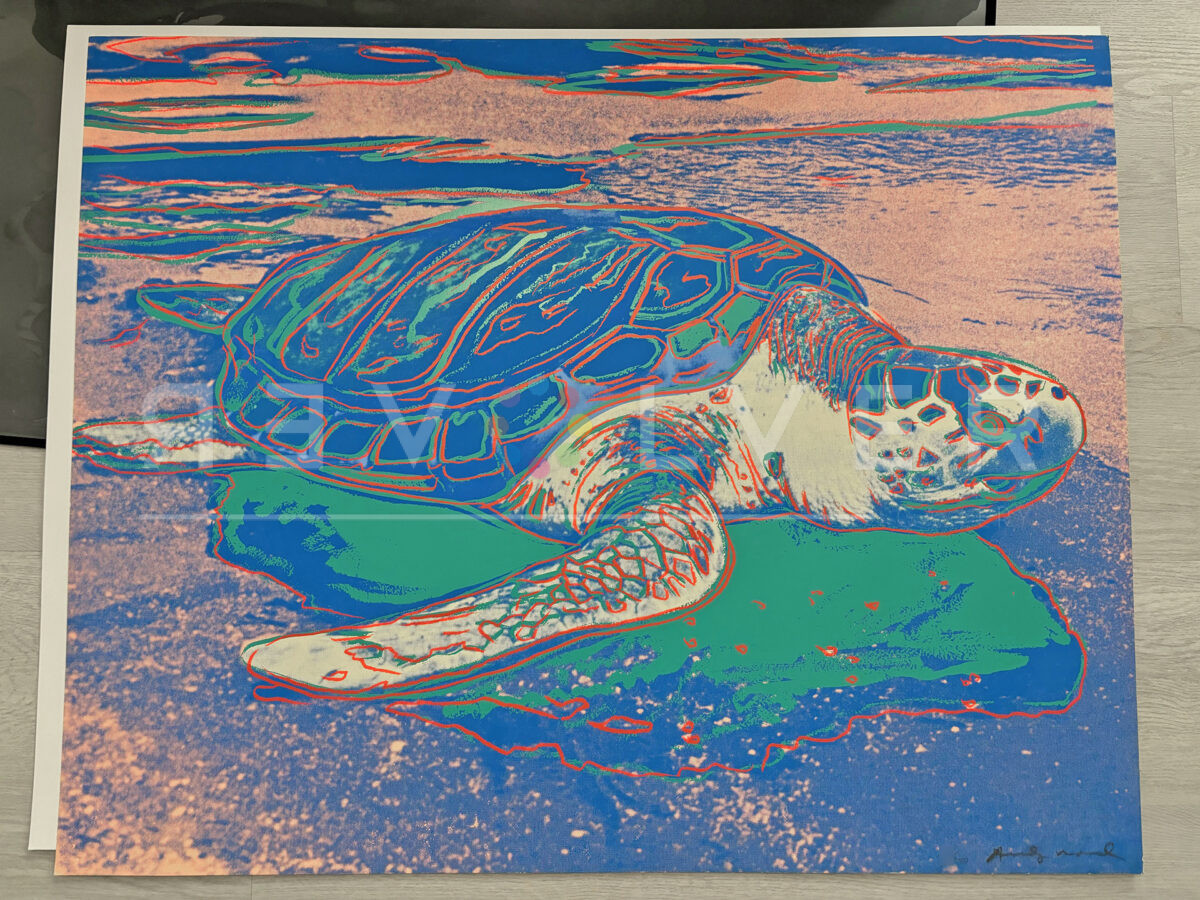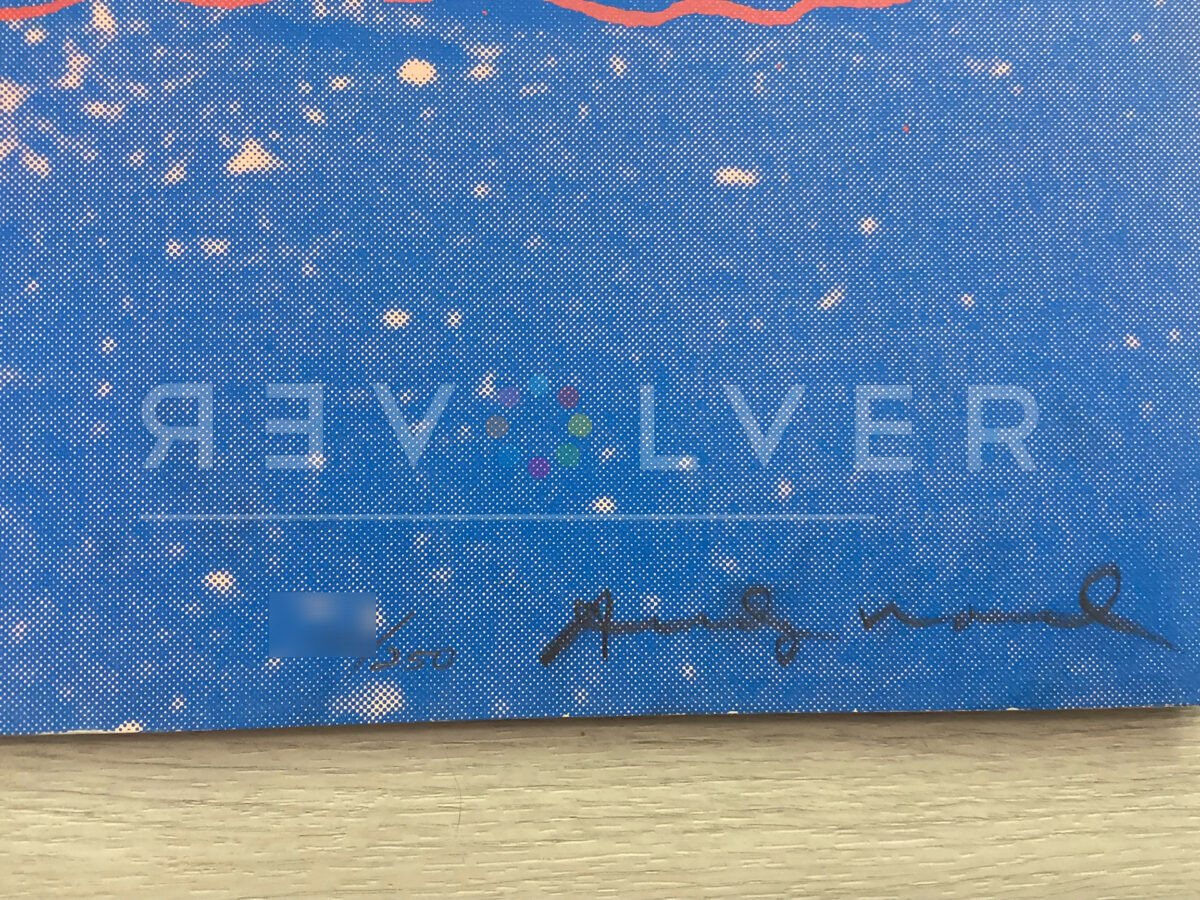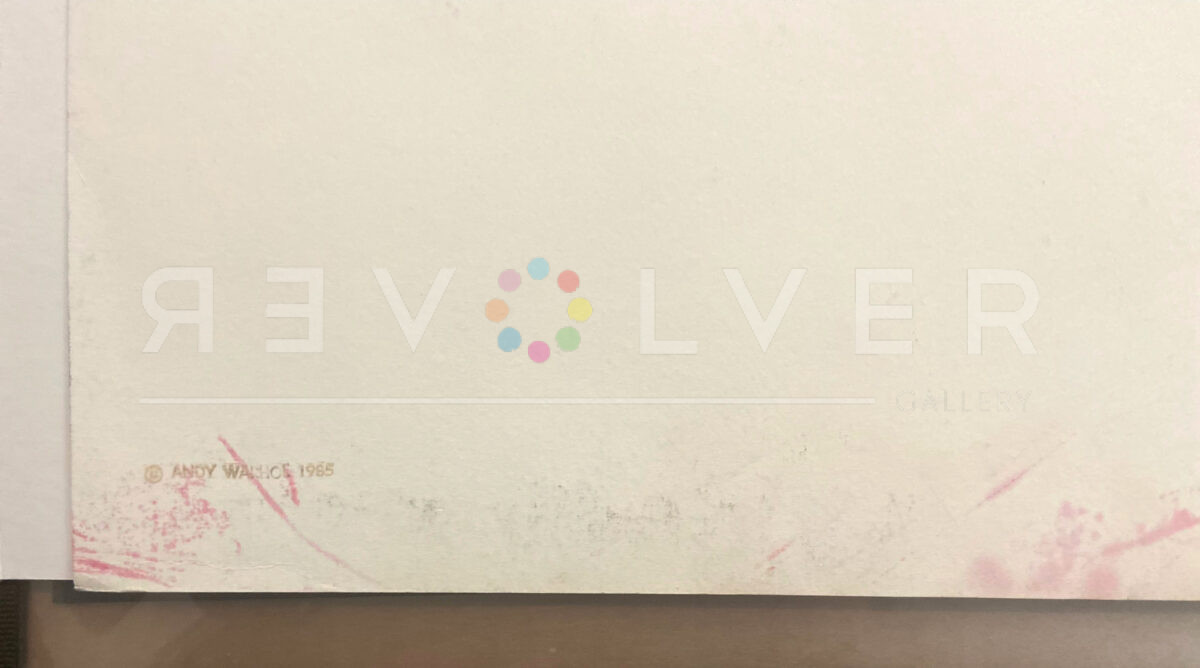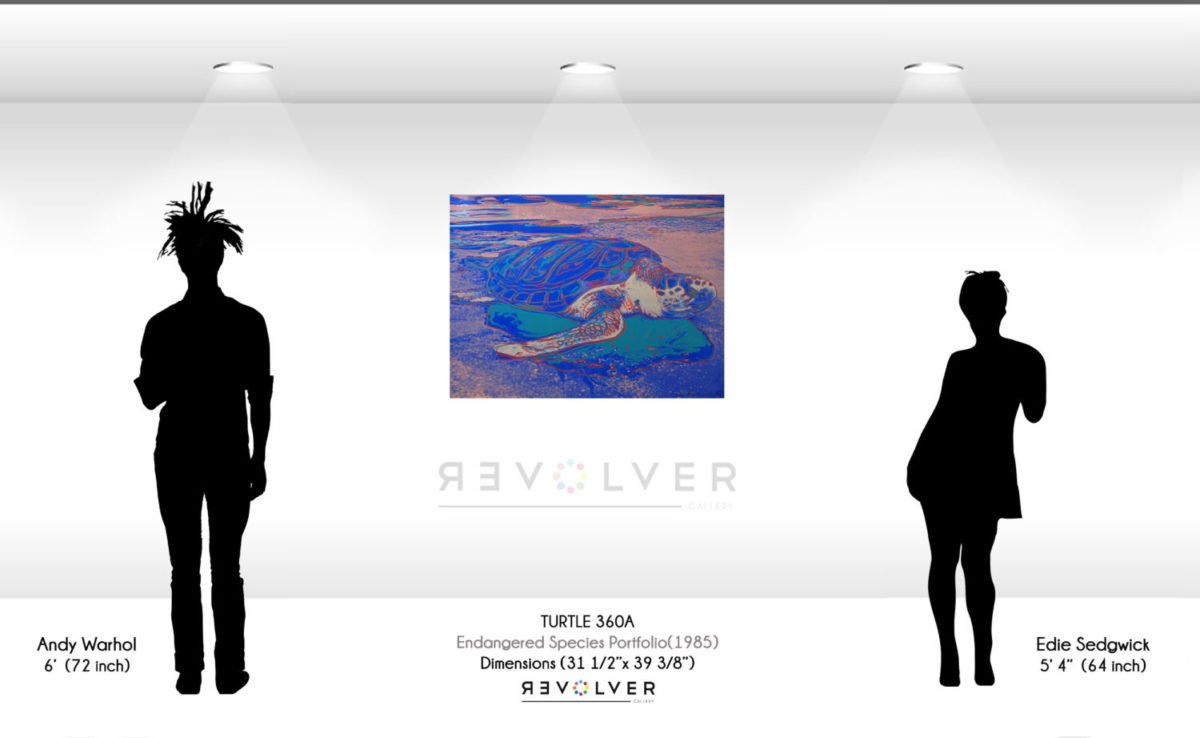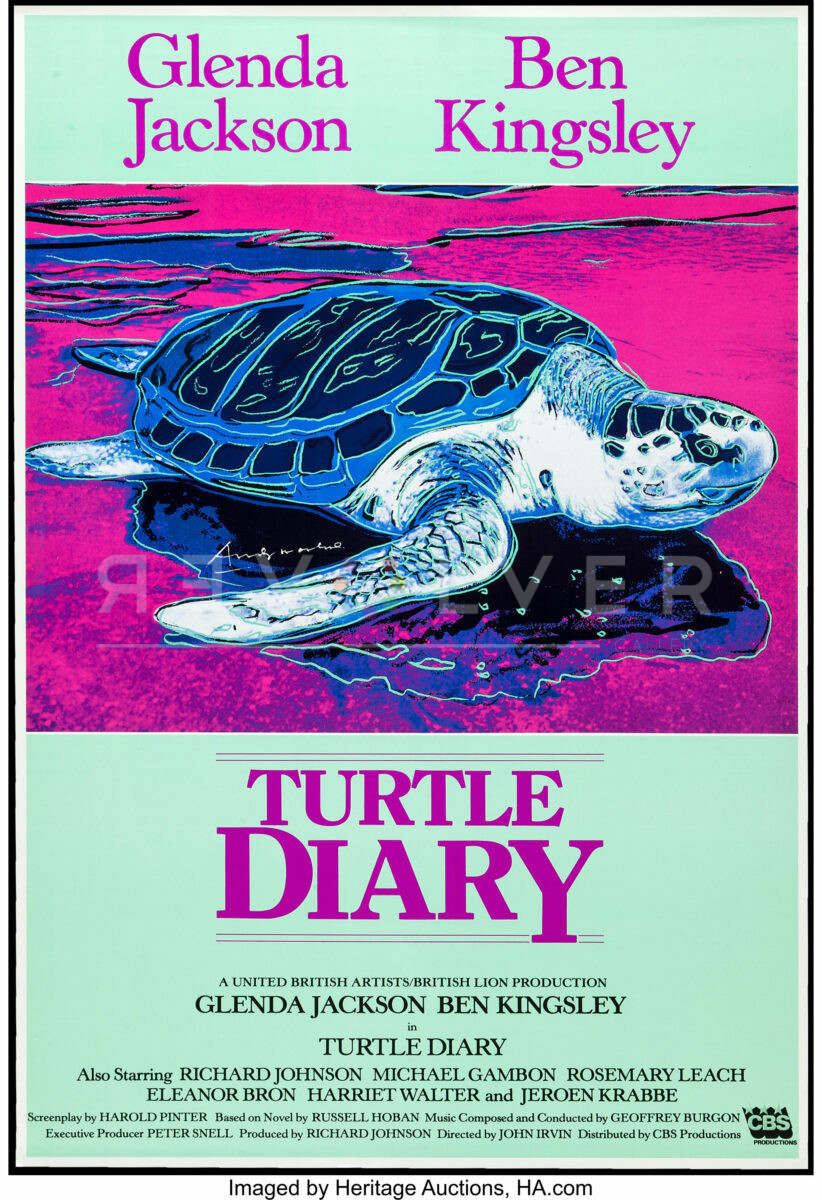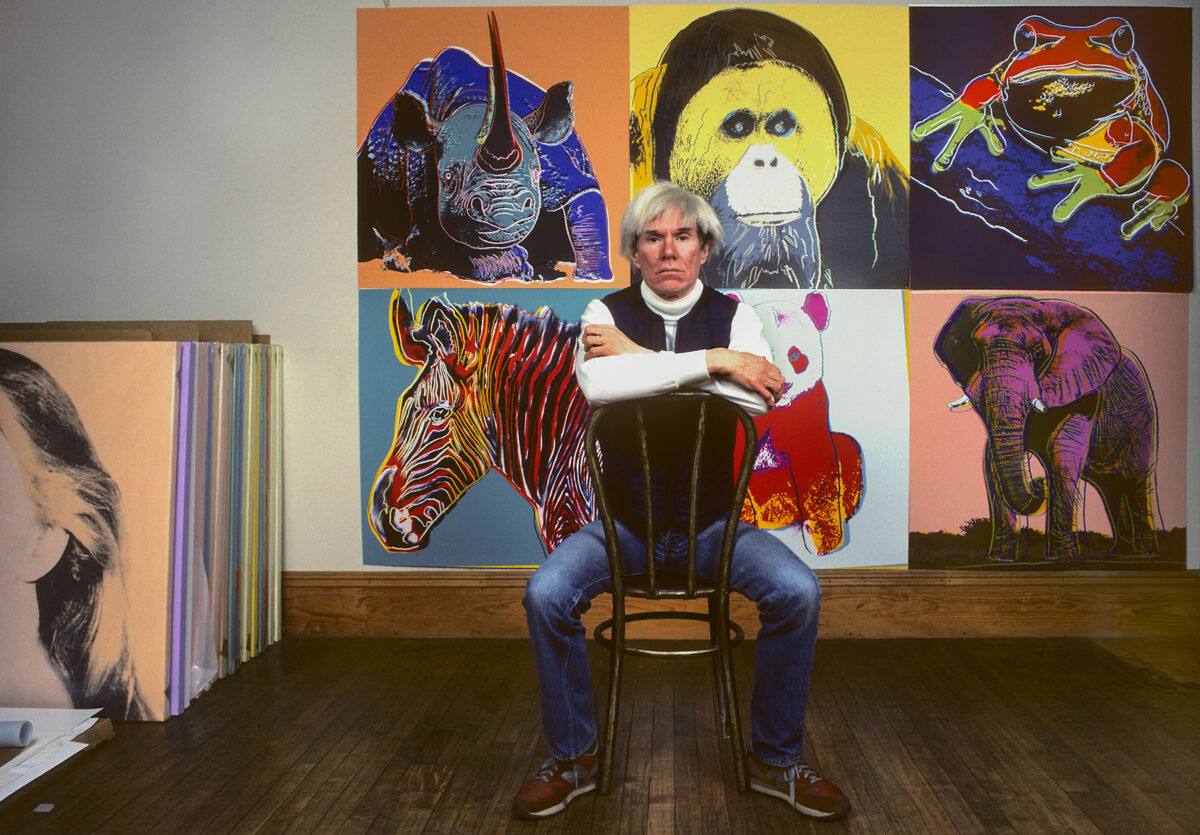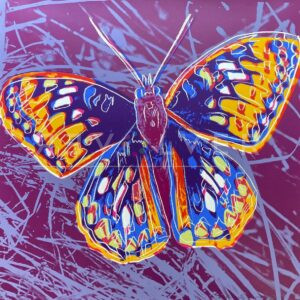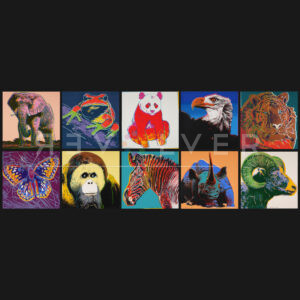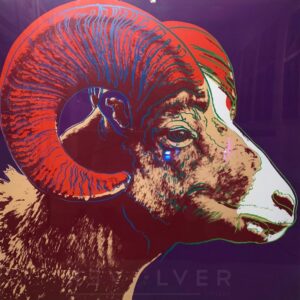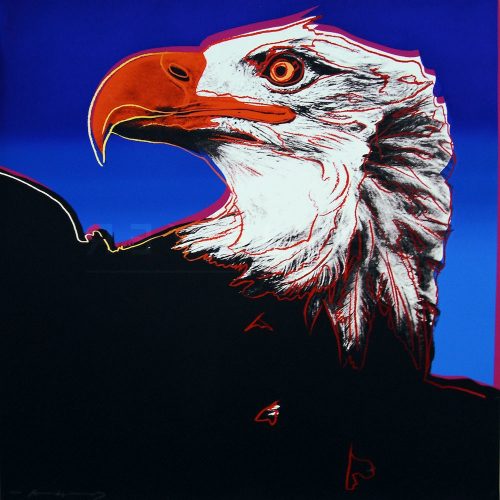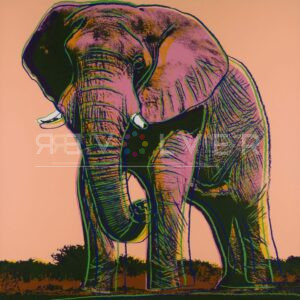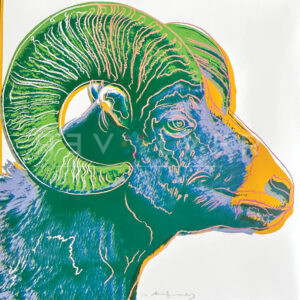Andy Warhol‘s Turtle (FS. II.360A) created in 1985, is a striking example of the artist’s ingenuity in screen printing and color experimentation. This piece, though often mistakenly thought to be part of Warhol’s Endangered Species portfolio due to its thematic and stylistic similarities, stands as an independent artistic project. It was commissioned for the British romantic comedy film Turtle Diary, which explores themes of liberation and connection, both of which are subtly echoed in Warhol’s work. The print serves as a companion to the film, imbued with Warhol’s style while contributing to the movie’s narrative.
At first glance, Warhol’s Turtle is an eruption of color and form, a departure from the natural hues typical of its subject. Blue, the color most naturally associated with sea turtles and their aquatic environment, is subverted with a metallic sheen, perhaps suggesting the unnatural interference of man in the natural world. The greens of the turtle’s shell, typically emblematic of life and vitality, are here electrified, almost neon, further emphasizing the artificial over the natural. The turtle, centered and imposing, seems to float on the canvas, giving the composition a lively, dynamic quality. Its form is outlined in bold, confident strokes of red that enhance its shape and volume, suggesting both stillness and movement—a duality reflecting the characters’ journey from inhibition to liberation in Turtle Diary.
Warhol’s Turtle not only invites viewers to reflect on the beauty and exoticism of marine life but also subtly prompts a dialogue on environmental issues, much like his Endangered Species portfolio of two years prior. Although created as part of a separate project, the print shares the portfolio’s spirit in its vivid celebration and implicit protection of animal life. The screen-printing process, with its capacity for replication and variation, underscores the theme of multiplicity—each turtle, each individual, is unique yet part of a greater whole. The act of releasing the turtles in the film becomes a poignant allegory for the characters’ release from their own constraints, an idea that resonates through the energetic and seemingly liberated strokes of Warhol’s turtle.
The interplay between texture and flatness is another characteristic Warholian element in this artwork. The flat, bold areas of color contrast with the textured, almost tactile quality of the outlined sections, creating a remarkable visual depth. The turtle, an ancient symbol of wisdom and endurance, becomes a metaphor in Warhol’s hands, representing not only the arc of the characters’ journey in the film, but also the persistence of nature. More recently, the artwork has been echoing the timeless moral of Aesop’s fables in the art world; as Turtle gains momentum in the market for Warhol prints, it demonstrates that slow and steady does indeed win the race. This piece, through its confluence of environmental advocacy, filmic storytelling, and artistic innovation, has proven to be a vital and compelling component of Warhol’s artistic legacy.
Photo credit: Turtle Diary (CBS, 1985) poster designed by Andy Warhol. (27″ X 40″). Courtesy of Heritage Auctions.

